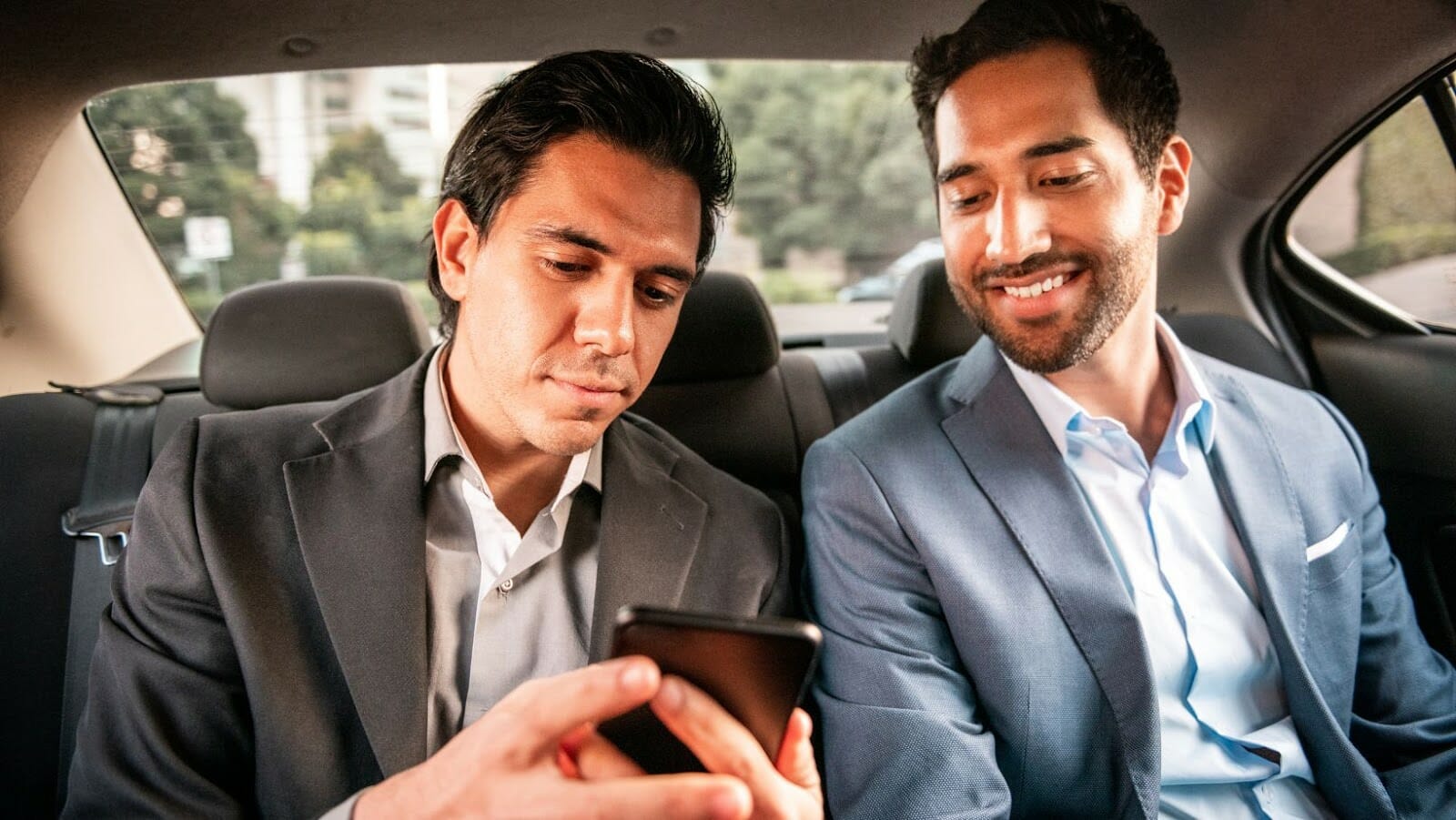
The vision of self-driving cars has been a topic of much discussion in the automotive industry for several years. Recently, Volvo Cars and Uber have teamed up to bring the vision of driverless cars closer to reality. They have revealed a production vehicle ready for self-driving, a major milestone in the quest for autonomous cars.
This article will explore the partnership between Volvo Cars and Uber and will discuss the implications of the production vehicle they have created.
Volvo Cars and Uber present production vehicle ready for self-driving
Self-driving cars are vehicles capable of sensing their environment and navigating without human input. They combine a variety of sensors to perceive their surroundings, including radar, lidar, GPS, odometry and computer vision. Advanced control systems interpret sensory information to identify appropriate navigation paths and to actuate the vehicle’s movements.
In recent years, Volvo Cars, in partnership with Uber Technologies Inc., have developed technology for self-driving vehicles at an unprecedented rate. The companies have released the first production car ready for self-driving on public roads in part of Pittsburgh in 2016. This has created a race among global automotive giants to develop safe, advanced self-driving cars.
Volvo Cars is working on various technologies related to autonomous driving such as LiDAR (Light Detection And Ranging) technology that works like radar but uses lasers instead; redundant brake systems; advanced driver assistance systems (ADAS); smarter electronics; and more intelligent cars that can interact with their environment safely throughout their lifespan. In developing these technologies and related infrastructures, Volvo Cars is investing heavily into the future of transportation – ushering in a new era of safer and more intelligent driving.
Overview of Volvo Cars and Uber’s Collaboration
In March 2019, Volvo Cars and Uber joined forces to make self-driving cars a reality. The two companies announced that they had developed a production vehicle designed to be self-driving. In addition, the two companies are working together to create the necessary technology, safety standards, and capabilities for a high-performance self-driving vehicle.
Volvo Cars is a leading automotive manufacturer and one of the world’s most recognizable car brands. It has partnered with Uber to develop safe self-driving systems since 2016. Through this joint effort, Volvo Cars and Uber have an ambitious goal: to bring fully autonomous vehicles to market as quickly as by 2021.
The collaboration between Volvo Cars and Uber will involve the development of hardware and software technologies to realise the full potential of driverless vehicles on public roads. In addition, Volvo Cars is committed to establishing industry benchmarks for higher safety levels through its partnership with Uber Engage Program — the company’s marketplace dedicated solely for ride-sharing services.
To achieve its mission of making autonomous driving a reality in cities worldwide, Volvo Cars has vowed to work with various stakeholders including regulatory authorities, cities, businesses, research institutions, and other automotive manufactures at all stages of its journey towards self-driving. Through close collaboration with these stakeholder groups Volvo Cars hopes not only to develop cutting edge technology for its vehicles but also establish necessary safety standards for driverless cars on public roads around the world.
Volvo Cars and Uber’s Partnership
Volvo Cars has been working towards making self-driving cars a reality for years, and recently they have taken a major step forward. Through their partnership with Uber, Volvo Cars has presented a production vehicle ready for self-driving.
This partnership marks a step forward for both companies as they work together to make self-driving cars a reality.
Overview of the Partnership
Volvo Cars, an automotive manufacturer from Sweden, has joined forces with Uber, a global ride-sharing company, to produce a production vehicle ready for self-driving. This partnership aims to advance the development of autonomous driving technology and ultimately make self-driving cars a reality on the road.
The Volvo XC90 SUV was selected as the base car for testing due to its advanced safety features and strong structure. In addition to providing cars outfitted with sensors, Volvo Cars has also provided engineers working closely with Uber to design and develop sensors specifically for the self-driving experience. As a result, up to 100 autonomous vehicles will be delivered to Uber by 2021.
The ability of the vehicles produced by this partnership is at Level 4 autonomy – meaning it requires moderate human intervention in certain scenarios, such as bad weather or emergencies. Scheduled testing will occur in Arizona and Pittsburgh in 2019 with plans for expansion in 2020 and beyond. The data gathered from these tests will help inform advancements within the self-driving industry – reducing risk factors, such as human error or driving distractions. With this groundbreaking initiative, Volvo Carr and Uber present hope for truly safe transportation on roads worldwide in the future.
Benefits of the Partnership
The partnership between Volvo Cars and Uber is a strategic move towards producing self-driving cars. Volvo has been a leader in the technological advancement of safety and design for a long time and this collaboration provides Uber with the necessary platforms to expand their autonomous driving capabilities.

Volvo and Uber have announced the production of a purpose-built vehicle ready for self-driving capabilities. This vehicle will be fully outfitted with sensors and computing power, enabling Uber drivers to autonomously drive around town without actively monitoring their journey.
This partnership gives individuals and companies more freedom to explore autonomous mobility as a viable option in cities. Self-driving vehicles bring major changes in road safety, efficiency, sustainability, traffic congestion, convenience, and cost–efficiency. This collaboration between Volvo Cars and Uber Technologies aims to ensure that these potential benefits can be safely achieved via reliable self-driving cars on public roads by 2021.
By collaborating, Volvo Cars and Uber are integrating the best of both worlds while creating innovative technologies designed to improve user experience and minimise risk factors associated with automated vehicles. As part of this effort, both companies have committed to sharing data on operations, design parameters, mapping techniques, communication protocols, etc., which will result in optimised development cycles.
Volvo Cars’ Autonomous Vehicle Development
Volvo Cars has been one of the leading forces in autonomous vehicle development for years. In 2017, the company partnered with Uber to work on self-driving cars and recently presented a production vehicle ready for self-driving.
This revolutionary vehicle will be the first of its kind on the market and is expected to have a major impact on the future of autonomous vehicles.
Let’s look at what Volvo Cars has done to make this dream a reality.
Overview of Volvo Cars’ Autonomous Vehicle Development
Volvo Cars, headquartered in Gothenburg, Sweden, is pioneering the development of cars with advanced driver assistance systems (ADAS) for autonomous operation. In its long-standing collaboration with technology company Uber and the Volvo Cars Autonomous Driving team, Volvo has developed a self-driving production vehicle that is being used to develop and test autonomous driving technology.

The Volvo XC90 Autonomous Driving Vehicle has a range of safety systems that enable self-driving at Level 4 autonomy — meaning it can handle most driving functions independently in specific circumstances — while a driver is still present to intervene if needed. The fully equipped prototype test car has 23 sensors including stereoscopic cameras, lidar (light detection and ranging), radar, ultrasonic sensors and other components necessary for autonomous functions such as adaptive cruise control and parking assist.
In 2019, Volvo Cars began public testing their self-driving cars in specific areas around Gothenburg as part of their “Drive Me” project. This was followed by tests in San Francisco with Uber using the XC90 SUV outfitted with the autonomous driving suite developed by both companies. To ensure safety during testing, certified operators are always inside the car to supervise and intervene if necessary.
With Volvo’s decades of expertise in automotive engineering and safety coupled with Uber’s world-leading technological platform for autonomy, the companies have been able to rapidly develop an integrated self-driving system for production vehicles that ensures safe and reliable operation on city streets around the world.
Details of Volvo Cars’ Autonomous Vehicle Development
Volvo Cars and the Uber ride-hailing service have a partnership with the aim of producing production cars capable of self-driving. The two companies have announced that they have created a production vehicle ready for self-driving system tests. This production vehicle will be used to develop a safe and scalable self-driving system specifically designed for urban areas.
The collaboration between the two companies is part of Volvo Cars’ autonomous driving strategy, emphasising safety and reliability. Volvo Cars has committed itself to having advanced driver assistance systems as standard on all their models from 2020 onwards, intending to have cars capable of autonomous driving in urban areas and highways by 2021.
Volvo Cars has implemented several milestones in their development project to ensure that self-driving vehicles are functioning safely. These milestones ensure the company’s vehicles meet robust safety criteria when operating autonomously. As a result, any potential defects can be quickly identified and corrected before they cause harm or injury.
The company is using sensor hardware such as cameras, LiDAR (Light Detection And Ranging) sensors, GPS (Global Positioning System) technology, ultrasound sensors and radar systems together with machine learning software that produces sophisticated maps that allow the car to determine its position accurately while understanding data it receives from its sensors. Additionally, more traditional fallback systems are also included in autonomous vehicles in case of unexpected events such as power failure or a blocked road ahead.
Once these steps have been taken, autonomous vehicles can begin road tests under limited conditions such as designated roads or specific times when technicians can monitor traffic patterns closely. Then, after more real world testing with more variables and complexity scenarios is completed satisfactorily, cars equipped with self-driving capabilities can begin operating on roads outside designated test zones compliant with local road regulations.
Ultimately Volvo’s ambitions are to offer completely autonomous vehicles suitable for various use cases like ride sharing services or goods transportation services on public roads without passengers enjoying full connectivity features such as fast data transfer rates by utilising cellular connection technologies like 5G Networks according to Nielsen (2020).
Volvo Cars and Uber’s Self-Driving Vehicle
Volvo Cars and Uber have partnered to develop self-driving cars that can be used on roads. The companies have released a production vehicle ready for self-driving and is one of the first examples of a fully autonomous vehicle. The vehicle has been tested and the companies hope to make it commercially available soon.
Let’s look at how Volvo Cars and Uber are working to make self-driving cars a reality.
Overview of the Self-Driving Vehicle
Volvo Cars and Uber are working together to create self-driving vehicles. The two companies have joined forces to develop a production vehicle ready for autonomous driving. Volvo Cars will manufacture the vehicles while Uber will provide the self-driving technology. The vehicle is expected to be the world’s first production car especially designed for autonomous driving.
The self-driving vehicle has a range of features specially designed for safe and reliable operation including nine cameras, radar, ultrasonic sensors and back-up systems such as steering, braking, connectivity and power backup. This combination of features allows it to detect objects around it to plan safe routes and manoeuvre around them accordingly. The vehicle is also equipped with redundancy systems which can take control if necessary in the case of an emergency or system failure.

The Volvo and Uber collaboration represents a significant step towards making self-driving cars a reality on our roads shortly. With this partnership, Volvo Cars has become a leader in developing safe autonomous capabilities for commercial applications on public roads worldwide.
Details of the Self-Driving Vehicle
Volvo Cars and Uber have joined forces to develop the world’s first production-ready self-driving cars. The vehicles, equipped with advanced driver-assistance systems (ADAS) based on Volvo Cars’ scalable architecture, are designed to be capable of Level 4 autonomous driving. This means that the vehicles will be able to take control of all aspects of driving without any human interaction—except for launching and stopping a self-driving trip—and will be ready for deployment as soon as possible.
The cars result from two years of collaboration, including extensive on-road testing in North America and Europe. Computers within the vehicle autonomously control steering, acceleration, and braking, featuring advances in key areas such as automated lane keeping systems (ALKS) and automatic emergency braking (AEB). Volvo Cars’ Scalable Product Architecture (SPA) also enables rapid deployment into production and quick adaptation to local market requirements.
In addition, a dedicated Safety Team works continuously to monitor safety performance while regular analysis inform improvements to the technology used in each car model. Cameras placed along each car’s interior (so-called “black boxes”) record audio and video for analysis in case of emergencies or events to ensure rider safety and autonomous vehicle accuracy throughout its lifetime using advanced artificial intelligence tools.
The cars produced through this collaboration are powered by Uber’s Autonomous Driving Platform (ATP), an open source platform available for partners that allows various features such as 3D visualisation for routing navigation guidance systems. The ATP also enables real time data sharing between cars using Supervised Machine Learning techniques so it can identify track road elements like lane markers accurately. A Tesla Autopilot system can assist but requires drivers remain engaged at all times when behind the wheel or face penalties like barring drivers violation of law etc). Additionally, GPS enabled global maps can help confirm routes giving drivers maximum flexibility while avoiding unusual/unexplained travel destinations/routes leading efforts towards zero emissions transportation results collectively helping make our roads safer & reduce traffic congestions!
“
tags = Volvo Cars, a leader in automotive safety, Uber, the leading ride-hailing firm, XC90 SUV, how volvo toyotaboudwaybloomberg, battery back-up power
“





